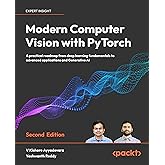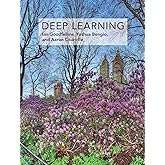
Enjoy fast, free delivery, exclusive deals, and award-winning movies & TV shows with Prime
Try Prime
and start saving today with fast, free delivery
Amazon Prime includes:
Fast, FREE Delivery is available to Prime members. To join, select "Try Amazon Prime and start saving today with Fast, FREE Delivery" below the Add to Cart button.
Amazon Prime members enjoy:- Cardmembers earn 5% Back at Amazon.com with a Prime Credit Card.
- Unlimited Free Two-Day Delivery
- Streaming of thousands of movies and TV shows with limited ads on Prime Video.
- A Kindle book to borrow for free each month - with no due dates
- Listen to over 2 million songs and hundreds of playlists
- Unlimited photo storage with anywhere access
Important: Your credit card will NOT be charged when you start your free trial or if you cancel during the trial period. If you're happy with Amazon Prime, do nothing. At the end of the free trial, your membership will automatically upgrade to a monthly membership.
Buy new:
-34% $82.75$82.75
Ships from: Amazon Sold by: Apex_media
Save with Used - Good
$73.52$73.52
Ships from: Amazon Sold by: Books In Demand

Download the free Kindle app and start reading Kindle books instantly on your smartphone, tablet, or computer - no Kindle device required.
Read instantly on your browser with Kindle for Web.
Using your mobile phone camera - scan the code below and download the Kindle app.

Follow the author
OK
Multiple View Geometry in Computer Vision 2nd Edition
Purchase options and add-ons
- ISBN-100521540518
- ISBN-13978-0521540513
- Edition2nd
- PublisherCambridge University Press
- Publication dateApril 19, 2004
- LanguageEnglish
- Dimensions7 x 0.25 x 9.5 inches
- Print length670 pages
Frequently bought together

Customers who viewed this item also viewed
Editorial Reviews
Review
Book Description
Product details
- Publisher : Cambridge University Press
- Publication date : April 19, 2004
- Edition : 2nd
- Language : English
- Print length : 670 pages
- ISBN-10 : 0521540518
- ISBN-13 : 978-0521540513
- Item Weight : 3.25 pounds
- Dimensions : 7 x 0.25 x 9.5 inches
- Best Sellers Rank: #277,332 in Books (See Top 100 in Books)
- Customer Reviews:
About the author

Richard Hartley is a professor at the Australian National University and Distinguished Researcher at NICTA in Canberra. His main area of research is Computer Vision.
Customer reviews
Customer Reviews, including Product Star Ratings help customers to learn more about the product and decide whether it is the right product for them.
To calculate the overall star rating and percentage breakdown by star, we don’t use a simple average. Instead, our system considers things like how recent a review is and if the reviewer bought the item on Amazon. It also analyzed reviews to verify trustworthiness.
Learn more how customers reviews work on AmazonReviews with images
Top reviews from the United States
There was a problem filtering reviews. Please reload the page.
- Reviewed in the United States on April 11, 2020I value text books that are clearly written. You can look at the description of two books, they seem identical, but one is clear and easy to understand, while the other makes no sense at all. This text book is very clearly written, and it's a pleasure to read.
The book is almost entirely self contained, though understanding Projective Geometry first will help. "Geometry and Analysis of Projective Spaces" by C. E. Springer is a good choice for that. The only weak spot in this book was the description of Plucker lines. Fortunately, these were not used extensively later in the text.
- Reviewed in the United States on May 23, 2013I graduated engineering school several years ago and was a bit intimidated to start something so new, but Hartley does a magnificent job of breaking things down into readable English.
Have you ever wondered why 4x4 matrices are used in computer graphics? In school we got a half-way answer about the projective matrix, but it was never really satisfying. This book explains the math behind that and much more clearly, leaving you with many "ah ha" moments.
- Reviewed in the United States on July 8, 2013This book introduces the detail and necessary knowledge in remodeling 3D from multiple images captured either simultaneously or chronologically. For advanced researcher, this book is extremely helpful but it is quite difficult for beginner's level. For anybody wanting to study this field from scratch, i would recommend "Introductory Techniques for 3-D Computer Vision" which is rather easy and explains the algorithm without the requirement of possessing prior field knowledge.
- Reviewed in the United States on September 10, 2012First a disclaimer. I am not an expert on projective geometry. However, I found the topics to be clearly explained and motivated so that I had no trouble following the progression. I only wish I had found this book sooner, as I spent much time and effort developing algorithms and formulae that I could have picked straight from the chapters of this text.
- Reviewed in the United States on April 26, 2009This book is very complete and rigorous in its explanations of the theory. However, I just think I like the approach in An Invitation to 3-D Vision a bit better. This book is better illustrated than that one and is more careful in its explanations, but this book just seems more focused on providing complete proofs than giving you a feel for how you would approach a real problem. Even the exercises are more along the lines of proofs. I like how An Invitation to 3-D Vision ends the book with a complete example. In all fairness, though, this book does have quite a bit of Matlab code on its website.
The book begins with some background material on 2D and 3D geometry. Then the author explains single-view geometry and how cameras map an image in 3D space to an image. Two-view geometry is next, with the author describing the epipolar geometry of two cameras ahd projective reconstruction from resulting image map correspondences. Part three of the book extends ideas to three cameras and the resulting trifocal geometry. The final section of the book takes the algorithms of the book to N views. Thus this book has a simple and straightforward structure that belies the complexity of the material.
If you are really researching this subject you should probably have this book for explanation, illustrations, and rigor, and the Invitation book for enlightenment through a good example-based approach. You should also have Introductory Techniques for 3-D Computer Vision as a text on the individual pieces of algorithms involved in 3D vision. And don't even think about getting into this subject unless you already have a firm foundation in linear algebra, image processing, and computer vision in general as found in Computer Vision, which is my favorite introductory computer vision text.
- Reviewed in the United States on November 18, 2021Just satisfied with the book and delivery.
- Reviewed in the United States on June 23, 2013Great book for anyone interested in Geometry Computer Vision. Can explain in a way you can pick it up and use it. Again it was a gift and makes a wonderful gift for someone in this field.
- Reviewed in the United States on August 4, 2011If you're interested in photogrammetry, buy this book. Extremely well written, extremely informative, and more clear than I could have hoped for. The only thing it doesn't provide is written out code (not even pseudocode) - just a plain-English description of each algorithm's steps.
Top reviews from other countries
 n00dleReviewed in the United Kingdom on October 3, 2018
n00dleReviewed in the United Kingdom on October 3, 20185.0 out of 5 stars Pretty much the bible for projective transforms and multi-view geometry
Well written, clear and concise. Builds complexity at a sensible level.
 Sunu WibiramaReviewed in Japan on May 19, 2014
Sunu WibiramaReviewed in Japan on May 19, 20145.0 out of 5 stars Great book for 3D reconstruction - need explanation for learning roadmap
I have been doing research in 3D computer vision since 2008, but I really got a chance to buy this book just only recently. This is a great book for researcher who studies 3D computer vision and vision-based robotics (i.e.: reconstructing 3D model from multiple images, camera calibration, using stereo camera for visual odometry, etc.). One thing that I admire from this book is the ability of both authors to explain the philosophy behind projective space and homogeneous coordinate. You can find a bunch of equations on the other books, but you can only find here the reason of why we need to use projective space when dealing with 3D reconstruction from multiple images.
Geometry and algebra require strong imagination. However, a picture is worth a thousand words. This book provides several illustrations that help you understand what the authors meant in explaining several crucial terms, such as affine transformation, distortion from camera projection, etc.
Several suggestions for better improvement:
1. The companion website is useful: http://www.robots.ox.ac.uk/~vgg/hzbook/
However, it is not periodically updated. If the authors can provide a live blog or a github account to provide contributed source code, this book will be really awesome and useful, even for beginners. I really admire how Matthew A. Russell (author of Mining the Social Web) helps his readers developing their skill using his book. He also gives opportunity to his readers to delve broader topics.
Take a look at these pages:
https://github.com/ptwobrussell/Mining-the-Social-Web-2nd-Edition
http://miningthesocialweb.com/
2. It is better if authors provide "learning road map" for whom newly entering research area in 3D computer vision. New researcher often asks: "What should I do to grasp the content of this book? You said that your book is a primary source in 3D computer vision, but what are introductory references needed to understand your book?"
Personally, I will suggest you to read a classic "An Introductory Techniques for 3-D Computer Vision" by Trucco and Verri (1998) before getting "bigger image" of what can be done by 3D computer vision. For math, "Introduction to Linear Algebra" by Strang is my favorite.
Finally, I really recommend this book in your reading list, if you are working on 3D computer vision. You will never regret to have this book in your bookshelf.
-
 Claudia RamírezReviewed in Mexico on October 28, 2021
Claudia RamírezReviewed in Mexico on October 28, 20215.0 out of 5 stars Este libro "is a must" sí investiga sobre vision por computadora, particularmente multiocular.
Este libro es una muy buena referencia sobre geometría proyectiva aplicada a visión por computadora. Es una base sólida para la visión multilocular. Esta literatura abarca tópicos desde los principios de geométrica proyectiva, modelo de cámara pinhole, modelo de sistemas estéreo, rectificación de imagen, tensores triloculares, métodos de reconstrucción tridimensional entre otros. Este libro debe leerse cuidadosamente –detalladamente por no decir--, ya que el autor precisa en muchos detalles para los tópicos, y es fácil perderse si se omite algún de estos. En general, la teoría expuesta en mi experiencia es replicable y experimentable (por ejemplo métodos de triangulación y calibración de dispositivos pinhole) además, este libro contiene algunos métodos matemáticos conocidos sintetizados de manera ecuánime en los apéndices. Sin duda recomendado ampliamente.
 Este libro es una muy buena referencia sobre geometría proyectiva aplicada a visión por computadora. Es una base sólida para la visión multilocular. Esta literatura abarca tópicos desde los principios de geométrica proyectiva, modelo de cámara pinhole, modelo de sistemas estéreo, rectificación de imagen, tensores triloculares, métodos de reconstrucción tridimensional entre otros. Este libro debe leerse cuidadosamente –detalladamente por no decir--, ya que el autor precisa en muchos detalles para los tópicos, y es fácil perderse si se omite algún de estos. En general, la teoría expuesta en mi experiencia es replicable y experimentable (por ejemplo métodos de triangulación y calibración de dispositivos pinhole) además, este libro contiene algunos métodos matemáticos conocidos sintetizados de manera ecuánime en los apéndices. Sin duda recomendado ampliamente.5.0 out of 5 stars
Este libro es una muy buena referencia sobre geometría proyectiva aplicada a visión por computadora. Es una base sólida para la visión multilocular. Esta literatura abarca tópicos desde los principios de geométrica proyectiva, modelo de cámara pinhole, modelo de sistemas estéreo, rectificación de imagen, tensores triloculares, métodos de reconstrucción tridimensional entre otros. Este libro debe leerse cuidadosamente –detalladamente por no decir--, ya que el autor precisa en muchos detalles para los tópicos, y es fácil perderse si se omite algún de estos. En general, la teoría expuesta en mi experiencia es replicable y experimentable (por ejemplo métodos de triangulación y calibración de dispositivos pinhole) además, este libro contiene algunos métodos matemáticos conocidos sintetizados de manera ecuánime en los apéndices. Sin duda recomendado ampliamente.5.0 out of 5 stars Claudia Ramírez
Claudia RamírezEste libro "is a must" sí investiga sobre vision por computadora, particularmente multiocular.
Reviewed in Mexico on October 28, 2021
Images in this review
-
 AmazonKundeReviewed in Germany on August 7, 2012
AmazonKundeReviewed in Germany on August 7, 20125.0 out of 5 stars 3D Computer Vision - leichter zu verstehen als erwartet
Das Buch habe ich als Begleitwerk für eine Vorlesung gekauft.
Das Buch ist sehr verständlich geschrieben und hat mir sehr gut geholfen Vieles zu verstehen, was in der Vorlesung nicht sehr ausführlich erklärt wurde. Im Endeffekt hat der Prof aus diesem Buch einfach abgeschrieben. In seinen Folien hat er aber nur die Grundaussagen mit ein paar Stichworten benutzt.
Man braucht schon bestimmte Grundkentnisse in Mathematik, um dem Autor folgen zu können, vor allem in der analytischen Geometrie und der linearen Algebra. Solche Themen wie Vektoren, Matrizen, Geraden, Ebenen, lineare Abbildungen müssen bekannt sein. Wenn man diese Themen nicht kann, wird man NICHTS verstehen und sollte das Buch nicht kaufen.
Das Buch ist zwar in English, was auf einige (wie mich) zuerst abschreckend wirkt (weil der Inhalt auch nicht gerade trivial ist), die Sprache hat aber eine gewisse Leichtigkeit, der Satzaufbau ist einfach (paar Wörter müsste ich natürlich nachschlagen). Im Prinzip ist das fast das gleiche Vokabular, was man für ein Mathebuch braucht.
 GaiaReviewed in Italy on May 7, 2024
GaiaReviewed in Italy on May 7, 20245.0 out of 5 stars perfect conditions
Perfect conditions and fast delivery. Recommended

















